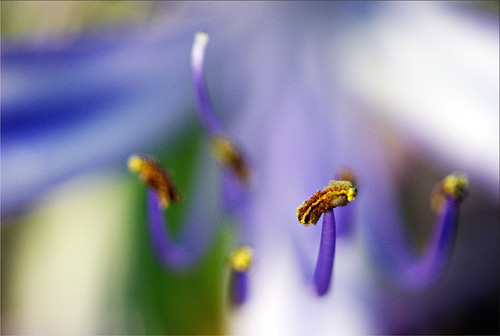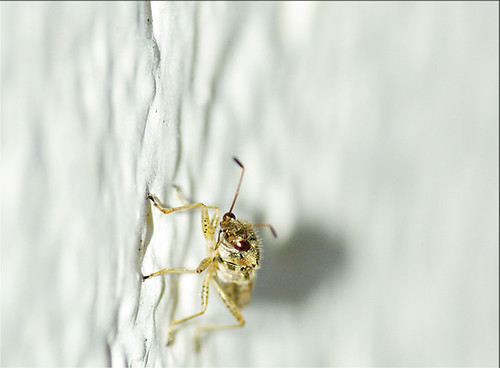Showing posts with label A. Show all posts
Showing posts with label A. Show all posts
Monday, December 27, 2010
Spring of Christmas Macro
This image is taken by A 200mm f4 Macro
4 seasons in one day. Melbourne is having a tantrum like a lady in menopause. With all friends leaving for festive season holidays (None of us really celebrate christmas), I managed to do 2 overseas shifts as well as reading a novel that I have made up my mind not finishing it. LOL.
Again, I think a photograph from the dying plant in my backyard would suffice for my blog. At least this is something!!
Merry Christmas and Happy New Year!
Thursday, December 23, 2010
Macro of a bug
This image is taken by Pentax A 200mm f4 macro
Guess where this shot was taken?
Yes, on the wall of my filthy room. The amazing thing about this bug was that it did not even bother to move while I wag the big camera all over it. I guess I did not have to spray Mortein all over it.
However, I did use 2 flash guns to stun it pretty well. It was captured head on on my camera creating that good impact I liked.
This is less than 5 mm in length and I could not name what this insect was. Thanks to a dull and uneventful Thursday - this shot really made my day. Soon I would say good bye to Pentax system pretty much. Still some gears did make me a little uneasy to let go.
Merry Christmas Everyone :)
p.s. I just read from News Week magazine that 17% of Americans who are unemployed, are no longer looking for work or even looking for part time based jobs.
Quote of the day
Serious sport, according to George Orwell, is a war minus the shootings.
Posted by
roentare
at
Thursday, December 23, 2010
6 comments:

 Labels:
200mm,
A,
bug,
f4,
macro,
pentax
Labels:
200mm,
A,
bug,
f4,
macro,
pentax
Thursday, December 16, 2010
Blue Fairy Wren - a thought
The image is taken by Pentax A* 300 f2.8 with 2 teleconverters in King lake national park.
For some years, I had been an avid bird watcher and photographer. Apart from the usual boring exotic myenas and native rosella, a lot of the native Victorian birds were rarely spotted.
Due to real life commitment to various daunting chores, this hobby had been neglected for a number of years. However, I spotted blue fairy wren every now and then after a plentiful raindrop this year. Yeah, thanks to El Nina that these wrens were somewhat more prevalent in my local reserve parks!
Therefore, I googled a bit of information on superb fairy wren and discovered something very interesting shown below...
"The Superb Fairywren is notable for several peculiar behavioural characteristics; the birds are socially monogamous and sexually promiscuous, meaning that although they form pairs between one male and one female, each partner will mate with other individuals and even assist in raising the young from such pairings. Male wrens pluck yellow petals and display them to females as part of a courtship display."
So what does it mean by socially monogamous and sexually promiscuous? It seems to apply to male gender in general after all. I do love that phrase "socially monogamous" being socially isolated? Then "sexually promiscuous" as animal instinct disinhibited?
No wonder male wrens look very colourful while females look very dull. Again, male wrens tend to hop around in a very agile fashion. Any photographers in South Eastern Australia would know photographying wrens is an incredible task even with autofocus lens. So this image has been something like a milestone after I could get some clarity out of this image using manual focus ring!!
Now I am hesistating about micro 4/3 system where there is little range of telephoto selection for an avid bird photographer.
Birds are really interesting entities where all their organs are packed inside that tiny bodies and move so quickly that make it almost impossible to capture them on cameras.
Roe
Posted by
roentare
at
Thursday, December 16, 2010
17 comments:

 Labels:
300mm,
A,
australia,
bird,
blue fairy,
f2.8,
melbourne,
native,
nature,
pentax,
photography,
victoria,
wildlife,
wren
Labels:
300mm,
A,
australia,
bird,
blue fairy,
f2.8,
melbourne,
native,
nature,
pentax,
photography,
victoria,
wildlife,
wren
Monday, December 13, 2010
What is chromatic aberation? (CA)
This image is taken by Pentax A 50mm f1.2 at federation square of Melbourne.
Chromatic Aberration
Many a times we come across various Optical terms that seem to fall on deaf ears. Not only they prove to be jargons but also drown us in a state of confusion as it is a human-tendency to start guessing thing which we don’t know.
Chromatic Aberration is one such term that many of you might no be able to explain. A person who uses any form of camera must know this term well as it is closely related to property of a camera-lens.Starting with the basic meaning of Aberration, it is stated that it is the inability of a lens to produce an exact image, particularly at the edges of the photograph. Hence Chromatic Aberration would simply mean the inability of a lens to converge all the wavelengths to a single common point, thus causing a blur. You can also say that Chromatic Aberrations are color deviations of lens systems.This is a common problem in large aperture telephoto lenses that are used to detect astronomical activities and even shoot the closest wild pictures of rare species.In modern times, most of the expensive cameras have special lenses that are protected from such defects. But in most of the normal cameras, the problem of Chromatic Aberration persists.
The inability to focus the red and blue wavelengths results in purple fringing around the images.Ordinary cameras which have a very small pixel-pitch as in non-DSLR digital cameras have to incorporate a special processing step to remove it.Sometimes extremely sharp digital cameras may face the same problem. The image captured by the lens might have some really small areas. This tiny area is unable to stimulate red, blue and green color pixels and due to absence of some wavelength the captured image has some portion stored with incorrect color.Some of you might be thinking that avoiding colored photography is the simplest solution to this problem. But you are in for a surprise again because Chromatic Aberration affects Black & White Photography also. The phenomenon blurs the image completely. This problem can be overcome by exposing your original image for a longer duration of time to the lens.A very common example to experience is the blooming period for new leaves.
At the time of sunrise, try capturing the image of the filtered sun-rays that pass in between the new leaves and reach the ground. When you see the image, you’ll see the increasing visibility of purple-fringing.Hence, it is a good piece of advice to thoroughly check the lens features for Chromatic Aberration when you go to buy a new camera.
Posted by
roentare
at
Monday, December 13, 2010
No comments:

 Labels:
50mm,
A,
article,
basic,
beginner,
Chromatic Aberation,
f1.2,
lesson,
pentax,
photography,
terminology,
tutorial
Labels:
50mm,
A,
article,
basic,
beginner,
Chromatic Aberation,
f1.2,
lesson,
pentax,
photography,
terminology,
tutorial
Subscribe to:
Posts (Atom)





